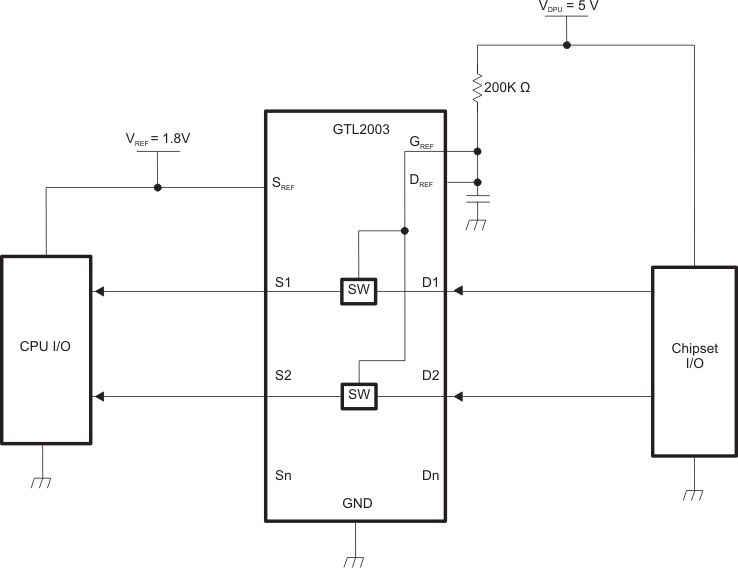SCDS305D February 2011 – September 2022 SN74GTL2003
PRODUCTION DATA
- 1 Features
- 2 Applications
- 3 Description
- 4 Revision History
- 5 Pin Configuration and Functions
- 6 Specifications
- 7 Parameter Measurement Information
- 8 Detailed Description
- 9 Application and Implementation
- 10Power Supply Recommendations
- 11Layout
- 12Device and Documentation Support
- 13Mechanical, Packaging, and Orderable Information
Package Options
Mechanical Data (Package|Pins)
Thermal pad, mechanical data (Package|Pins)
Orderable Information
9.2.2 Unidirectional Down Translation
For unidirectional clamping (higher voltage to lower voltage), the GREF input must be connected to DREF and both pins pulled to the higher-side VCC through a pullup resistor (typically 200 kΩ). TI recommends a filter capacitor on DREF. Pullup resistors are required if the chipset I/Os are open drain. The opposite side of the reference transistor (SREF) is connected to the processor core power supply voltage. When DREF is connected through a 200-kΩ resistor to a 3.3-V to 5.5-V VCC supply and SREF is set from 1 V to VCC – 1.5 V, the output of each Sn has a maximum output voltage equal to SREF.
 Figure 9-3 Unidirectional Down Translation to Protect Low-Voltage Processor Pins
Figure 9-3 Unidirectional Down Translation to Protect Low-Voltage Processor Pins